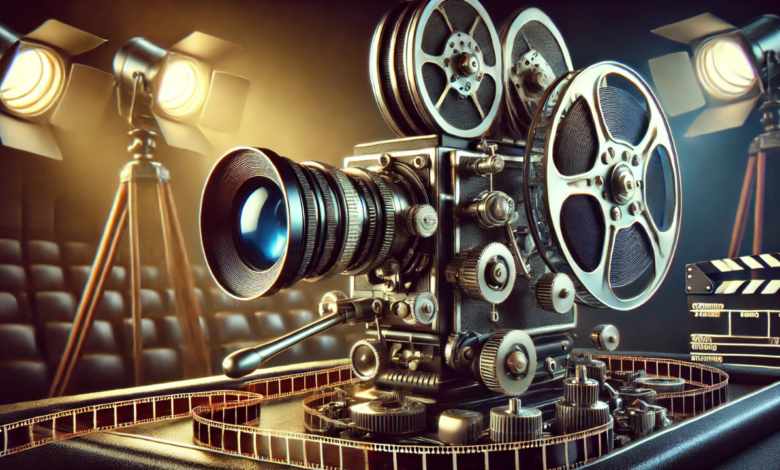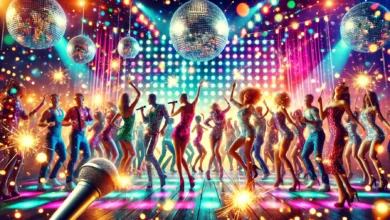A Deep Dive into the World of Film Makinesi: Understanding Its Role in Cinematic Magic

I. Introduction
Film makinesi, or film cameras, are the unsung heroes behind the scenes of every cinematic masterpiece. These cameras capture images, film makinesi preserve memories, and bring stories to life, translating the director’s vision into moving art. From the early days of cinema to modern-day blockbusters, film cameras have played an integral role in shaping the way we experience films. While digital cameras have taken over in recent years, film cameras, particularly in analog format, still have a unique charm that is appreciated by many filmmakers worldwide.
The importance of film makinesi cannot be overstated. They represent the backbone of traditional filmmaking, where every shot is meticulously planned and framed. Even with the advent of digital filmmaking, the art of capturing images on film continues to hold a significant place in the hearts of filmmakers. In this article, we will explore the mechanics behind film cameras, how they are used in filmmaking, the technological advancements over time, and their future in the industry. Understanding these aspects not only enhances our appreciation for films but also sheds light on the artistry behind the scenes.
II. The Mechanics Behind Film Makinesi
Key Components of a Film Camera
A film camera, regardless of its type, has several key components that work together to capture moving images. The lens is perhaps the most critical element. It focuses light onto the film stock and determines the depth of field and sharpness of the shot. Filmmakers can manipulate lenses to create dramatic effects, such as blurring the background or achieving a wide-angle view.
The film reel is another essential component. It holds the physical film, which is sensitive to light and captures the images exposed to it. The quality of the film stock can drastically impact the look of a movie, from graininess to color reproduction. In digital cameras, this is replaced with digital sensors, but the core concept remains the same.
The shutter controls how long the film is exposed to light, determining the exposure time for each frame. Different shutter speeds can create various effects, from sharp and crisp images to blurred motion that adds dynamism to a scene. Lastly, the viewfinder provides the director or cameraman with a preview of the frame they are about to shoot, ensuring that the composition is as planned.
How Film Cameras Work: Step-by-Step Process
Film cameras operate in a meticulous process that ensures every frame is captured in high detail. First, the lens focuses light onto the film stock, which moves through the camera via a mechanism that ensures it is properly aligned. As the light hits the film, it chemically reacts with the film’s emulsion to create an image. The shutter opens briefly to allow light through, and once it closes, the film advances to the next frame.
The advancement of film is controlled precisely to ensure each frame is properly exposed. In traditional film cameras, this process is continuous, with the film reel being steadily unwound as the film stock moves through the system. Once a scene is captured, the film is wound onto a take-up reel, ready for developing. In modern digital film cameras, this process is replaced by the use of sensors to capture images electronically.
III. Film Makinesi in Filmmaking: A Creative Tool

Role of Film Cameras in Different Cinematic Genres
Film cameras are not just technical devices; they are instruments of creativity. Each genre of film requires specific techniques and camera choices to evoke the desired emotion or mood. In action movies, for example, directors often use fast-moving shots and close-ups to create tension and excitement. A film camera’s ability to capture high-speed motion allows for smooth transitions between fast action sequences, keeping the viewer engaged.
In contrast, dramas or romantic films often use slower shots, focusing on the emotions of the characters. The depth of field, determined by the film camera’s lens, can create intimate close-ups of a character’s face, bringing the audience closer to their feelings. The flexibility of film cameras allows directors to experiment with various techniques to match the tone and atmosphere of the movie.
How Directors Use Film Cameras to Shape Their Vision
A director’s relationship with a film camera is deeply personal. It is often said that the camera is an extension of the director’s eyes. In many cases, the choice of camera, lens, and shot composition directly impacts the storytelling process. By manipulating the camera’s movements, filmmakers can add layers of meaning to a scene. A tracking shot can follow a character’s journey through a setting, while a static shot can create a sense of isolation or tension.
In films where visual storytelling is key, such as in silent films, directors often rely on the camera’s ability to frame each shot thoughtfully. They consider how the light interacts with the actors, how the camera can highlight certain emotions, and how movement can guide the viewer’s attention. Even in today’s digital age, film cameras remain essential for directors who want to harness the unique qualities of analog filming, such as texture and color saturation, which digital cameras sometimes struggle to replicate.
IV. Advances in Film Camera Technology
Transition from Analog to Digital Film Cameras
One of the most significant changes in the filmmaking world has been the shift from analog film cameras to digital film cameras. In the past, all films were shot on celluloid, a flexible plastic that held a chemical emulsion sensitive to light. While analog cameras produced stunning visual quality, they were also costly to operate, as film stock had to be bought, processed, and developed.
Digital film cameras, on the other hand, use electronic sensors to capture images, eliminating the need for physical film stock. This transition has drastically reduced costs for filmmakers, as digital storage is much cheaper and more efficient. Additionally, digital cameras offer more flexibility with editing and post-production, making them ideal for high-paced productions. While analog films are still cherished for their aesthetic qualities, digital cameras have become the standard in the film industry due to their practicality and versatility.
The Impact of Digital Cameras on Film Production
The rise of digital cameras has allowed for greater experimentation and freedom in filmmaking. Directors and cinematographers now have the ability to shoot multiple takes without worrying about running out of film. This convenience has led to more innovative approaches to storytelling, with filmmakers incorporating high-definition visuals, special effects, and even 3D technologies to create immersive cinematic experiences.
However, many filmmakers still argue that digital cameras cannot fully replicate the tactile experience of using traditional film cameras. The grain, texture, and natural imperfections of analog film offer a level of authenticity that digital cameras often struggle to match. Despite this, the ease and cost-effectiveness of digital cameras have cemented their place in modern filmmaking.
V. The Future of Film Makinesi: What Lies Ahead?
How Film Cameras Are Evolving for Modern Cinematography
As technology continues to advance, so too does the world of film cameras. Many filmmakers are now experimenting with hybrid cameras, which combine the best of both digital and analog technologies. These cameras are designed to offer the high-quality digital imaging that modern filmmaking demands while maintaining the visual richness of traditional film.
Additionally, virtual reality (VR) and augmented reality (AR) technologies are beginning to make their mark on cinematography. These immersive technologies require specialized cameras capable of capturing 360-degree video and rendering digital effects in real time. As filmmakers explore new storytelling methods, the evolution of film cameras will continue to shape the future of cinema.
Emerging Technologies in Filmmaking: VR and AR Cameras
The rise of virtual and augmented reality is poised to revolutionize the way films are made. VR cameras enable filmmakers to capture immersive 3D environments, allowing audiences to experience the film in a more interactive manner. This technology is particularly useful in gaming, interactive storytelling, and documentaries, where viewers can explore the scene in real time.
On the other hand, AR cameras enable filmmakers to overlay computer-generated visuals onto the real world. This allows for more seamless integration of special effects with live-action footage, creating stunning visual experiences that were once unimaginable.
VI. Conclusion
Film makinesi are far more than just tools for capturing images—they are instruments that help bring stories to life. From the mechanical intricacies of film cameras to the creative possibilities they provide, these devices have been an essential part of filmmaking for over a century. Whether analog or digital, film cameras continue to play a vital role in shaping how stories are told on the big screen. As technology advances, we can only imagine how these cameras will continue to evolve, offering filmmakers new ways to express their creative visions.
VII. FAQs
What is the difference between an analog and a digital film camera?
Analog film cameras capture images on photographic film, while digital film cameras use electronic sensors to record images.
How do film cameras affect visual storytelling in movies?
Film cameras help convey emotion, tension, and atmosphere through careful framing, lighting, and movement, enhancing the storytelling experience.
Can I still use traditional film cameras for modern filmmaking?
Yes, many filmmakers still use traditional film cameras for their distinct aesthetic qualities, though digital cameras are more common due to cost and flexibility.
What are the most famous film cameras used by renowned filmmakers?
Some iconic cameras include the Arriflex 435, Panavision Panaflex, and the Canon EOS-1D Mark III.
How has the evolution of film cameras impacted the cost of filmmaking?
Digital cameras have significantly reduced the cost of filmmaking by eliminating the need for film stock, development, and expensive processing, making it more affordable for filmmakers.
You May Also Read: https://worldbuz.co.uk/prince-narula-digital-paypal/


